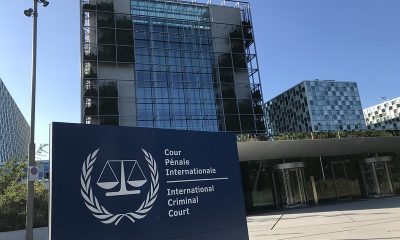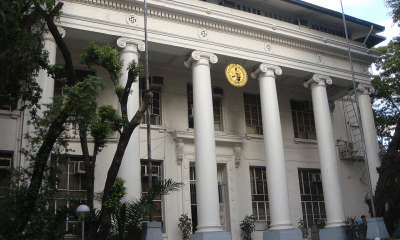Business and Economy
Improvement in China’s growth reassuring but no game changer for region it looms over
A pickup in China’s growth has fortified confidence the world’s second-biggest economy is stabilizing as the past decade’s explosive growth decelerates to the 7 per cent range.
China’s economic transformation since the 1980s has relied heavily on industrial investment and exports but those engines have run out of momentum. Chinese export manufacturers are surrendering some of their low-cost advantage as workers demand higher wages. Industrial growth has been so intense that many industries now have too many factories and suffer diminishing returns on every dollar of new investment. The cost to the environment and public health has been high.
Now, the government wants Chinese to save less and spend more to make the country’s own consumers a more important driver of growth.
China’s economy expanded 7.5 per cent in the April-June quarter after growing 7.4 per cent in the first quarter. Some 7.4 million new jobs were created in China in the first half of the year, a boost for country’s authoritarian rulers who fear politically destabilizing job losses.
The second quarter figure is positive but isn’t a game changer for Asia or the global economy. China has overtaken Europe and the U.S. to become the biggest market for numerous Asian nations so they must also adjust to its slower growth rates while dealing with sluggish recoveries in the West. Some of the challenges in Asia are outlined here.
Japan
Long a manufacturing and technological powerhouse, Japanese pride was injured when China leaped ahead to become the world’s second-biggest economy. Japan remains far more affluent than China but its political and business elites are plagued by a sense of insecurity as population decline generates a powerful backdraft against efforts to inject vigour into the economy.
Cue Shinzo Abe, Japan’s energetic prime minister, who has pushed through a lavish expansion of the money supply to counter the deflation, or falling prices, that has had a dissipating effect on the economy for two decades.
In the very short-term, Japan’s economy is weathering the impact of an increase in sales tax that was needed to help repair tattered government finances. The economy likely contracted in April-June after surging at a 6.7 per cent annualized pace in the first quarter when spending, to beat the tax increase, rose sharply.
The longer-term outlook turns on an economic policy overhaul needed to boost Japan’s waning competitiveness and cope with its declining and aging population. “We are looking for ways to change the Japanese economy,” says economy minister Akira Amari.
India
A new government is boldly promising to lift India’s economic game and if it delivers, India could within a few years outshine China as the region’s fastest-growing economy. Right now, though, the Indian economy is close to bedridden.
A tough global economic climate was part of India’s problem. But erratic government policymaking that chilled new investment by foreign and local businesses was also a significant culprit and added to the drag on growth from India’s Soviet-like bureaucracy.
Just three years ago, officials were brash enough to insist India would grow at rates above 10 per cent. They had some justification because growth rates were already approaching those levels but then they plunged to settle below 5 per cent.
While developed nations would be thrilled with growth of even 3 per cent, poverty-ridden India needs very rapid growth to provide jobs and improve living standards for the estimated two-thirds of its 1.2 billion people who live on under $2 per day. The IMF forecasts growth of 5.4 per cent this year and 6.4 per cent next year.
One catch for the rest of Asia is that India’s heavy reliance on imported oil means many of the benefits of faster growth would flow to the Middle East and other oil producers. Stronger Indian demand for crude could also jack up prices, troubling neighbours also reliant on imported energy.
Partly for cultural reasons, Indians are prodigious importers of gold so economic recovery might boost gold imports but at the expense of a greater lift in imports of manufactured goods from its Asian neighbours.
South Korea
South Korea ranks behind China, Japan and India in overall GDP but its rapid industrialization following the Korean War has made it wealthy and a powerful global player in industries including autos, consumer electronics, nuclear power, shipbuilding and entertainment.
Despite all that success, South Koreans are habitually looking over their shoulders and comparing their progress to the rest of the world. Part of the insecurity might stem from having bellicose and unpredictable North Korea and Asia’s two powerhouses, China and Japan, as neighbours.
Like other wealthy nations, South Korea is also constantly noodling whether its progress has come at too high a price. Those fears were realized earlier this year when hundreds of teenagers died in a ferry sinking that South Koreans blamed on a culture of profit first, safety last.
The central bank earlier this month said growth would be reduced to 3.8 per cent this year from the expected 4.0 per cent as consumer spending wilted after the disaster.
That would still be the fastest growth since 6.5 per cent in 2010 but disappointing given how much stimulus the government has added to the economy.
The near- and medium-term prospects for South Korea’s export-reliant economy hinge on recoveries in China, Europe and the U.S. Longer term, policymakers want to make domestic consumption and entrepreneurship bigger factors in growth. That will be a difficult shift because of the immense power wielded by the country’s industrial conglomerates.
Southeast Asia
As individual countries, the 10 nations of Southeast Asia often fall off the international radar unless a big news event such as a natural disaster, coup or plane crash draws attention to the region. But clubbed together under a grouping known as ASEAN, the region boasts 625 million people, GDP of $3.8 trillion and annual trade with the rest of the world of $2.4 trillion.
Growth in Southeast Asia, which spans countries as different as the wealthy city-state of Singapore and poor landlocked Laos, is likely to be driven in the next decade by rising numbers of middle income households, trade within its fledging customs area, and massive expansion of infrastructure.
After a 5.2 per cent expansion in 2013, the Asian Development Bank expects growth in the five largest economies of Indonesia, Malaysia, the Philippines, Thailand and Vietnam to be steady in 2014 and accelerate to 5.6 per cent in 2015.
Yet the outlook could be derailed because the region’s two biggest economies, Indonesia and Thailand, face political ruptures.
Indonesia’s recent presidential election failed to produce a clear winner, sparking fears of instability. The official results will be out by July 22. A coup earlier this year in Thailand followed months of destabilizing street protests. Military rule has ended the protests but the political divisions may remerge once new elections are called.
AP Business Writers Joe McDonald in Beijing, Elaine Kurtenbach in Tokyo, Kay Johnson in Mumbai, Youkyung Lee in Seoul and AP writer Eileen Ng in Kuala Lumpur contributed.






















